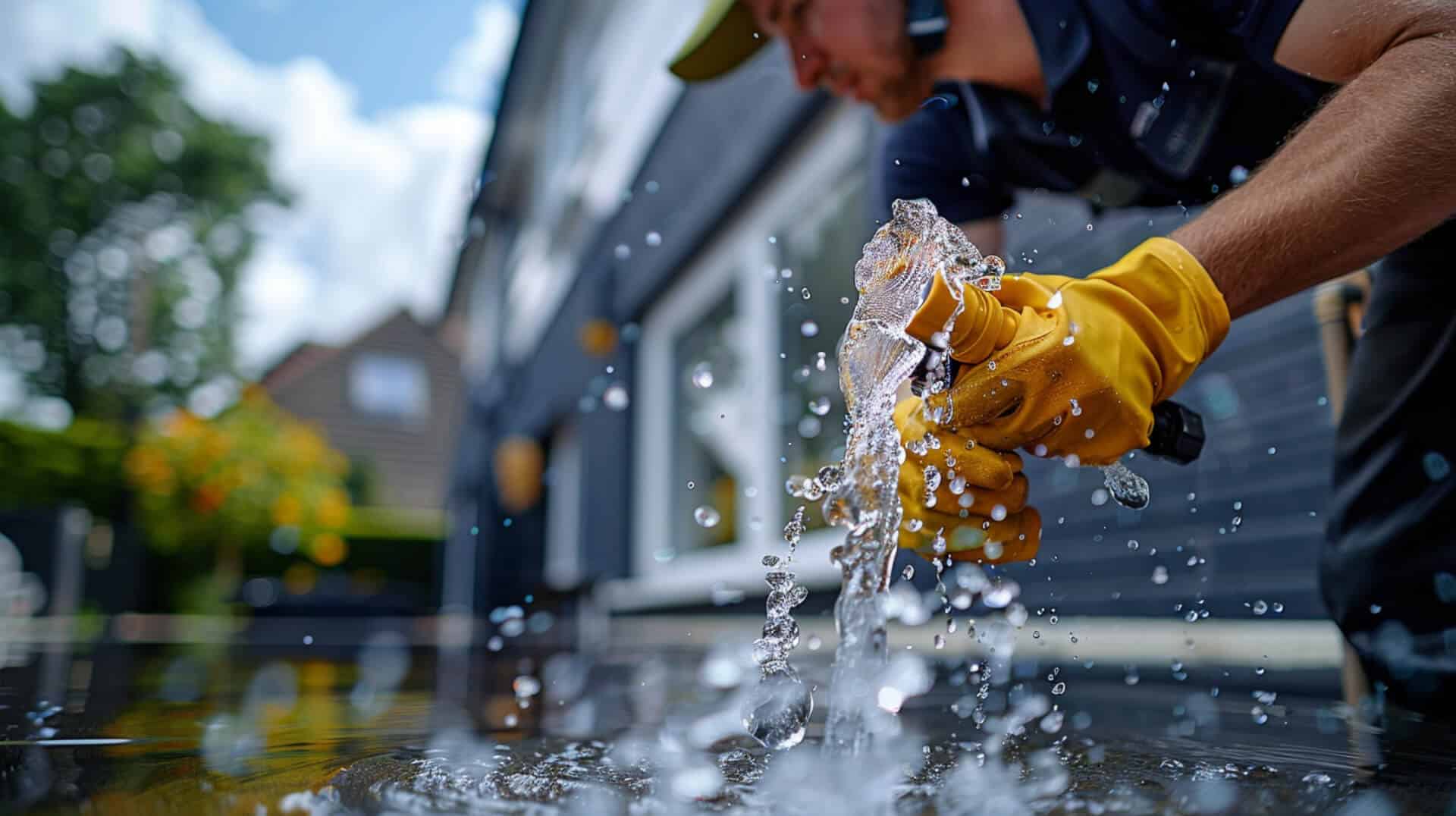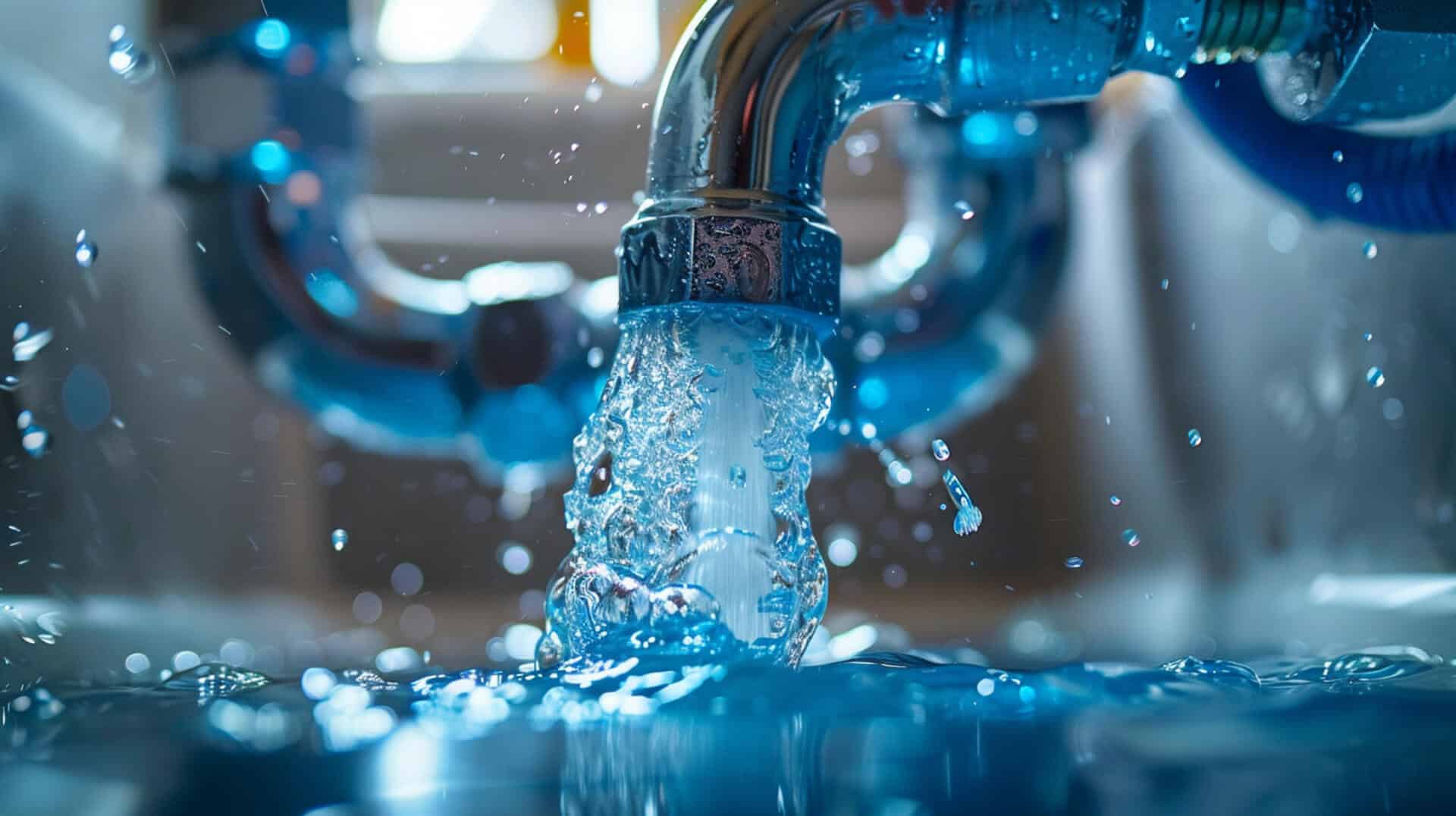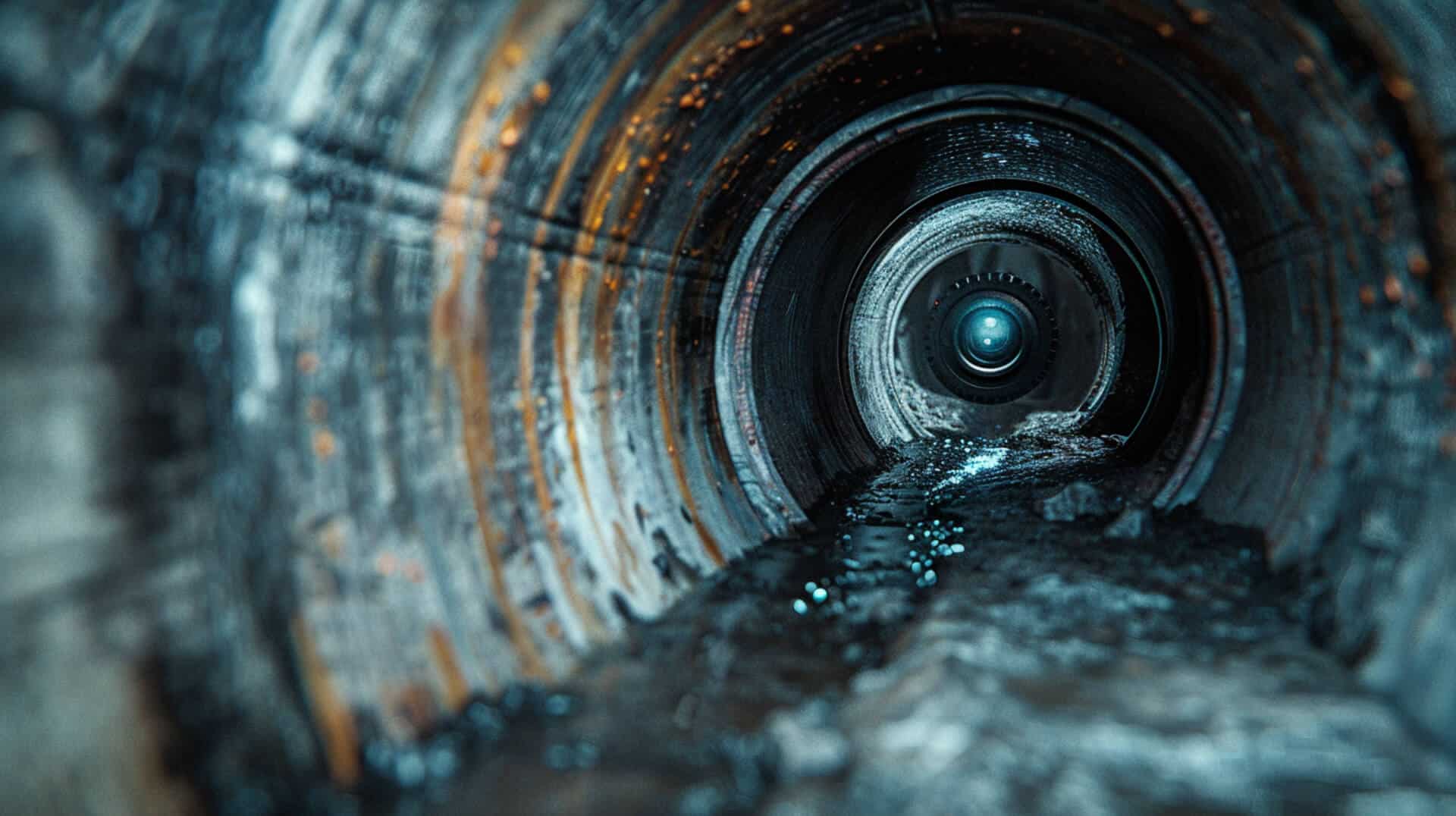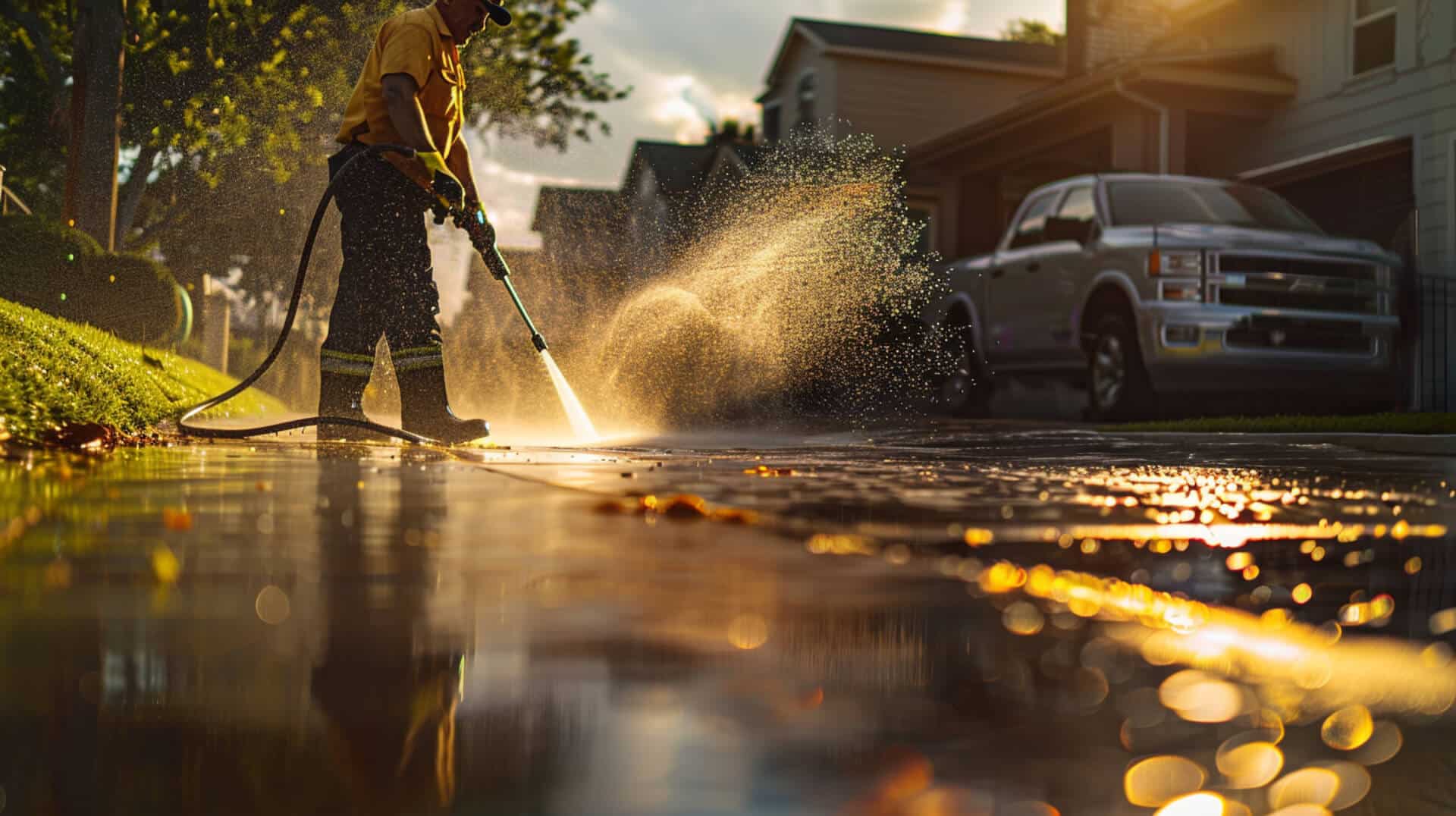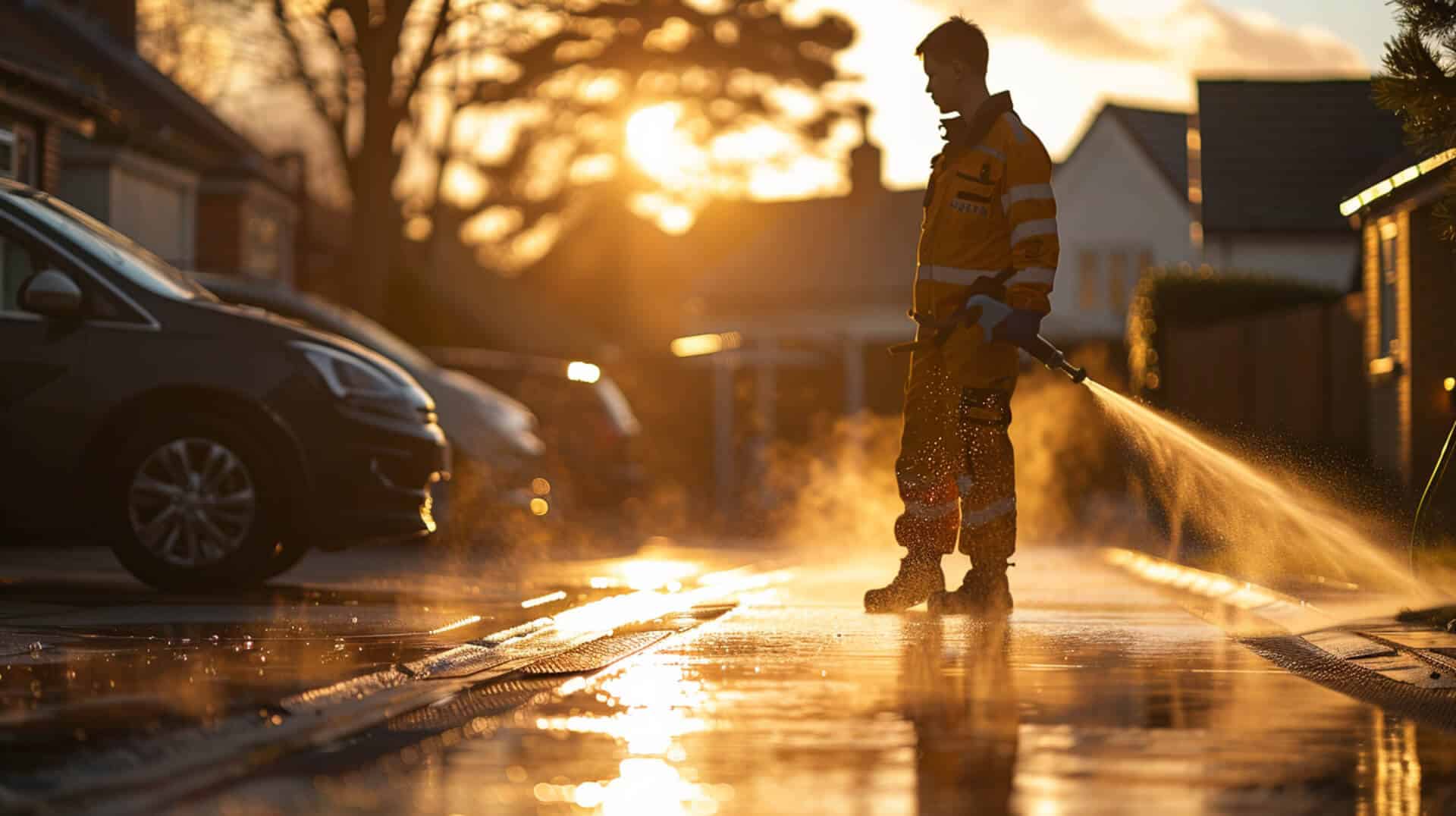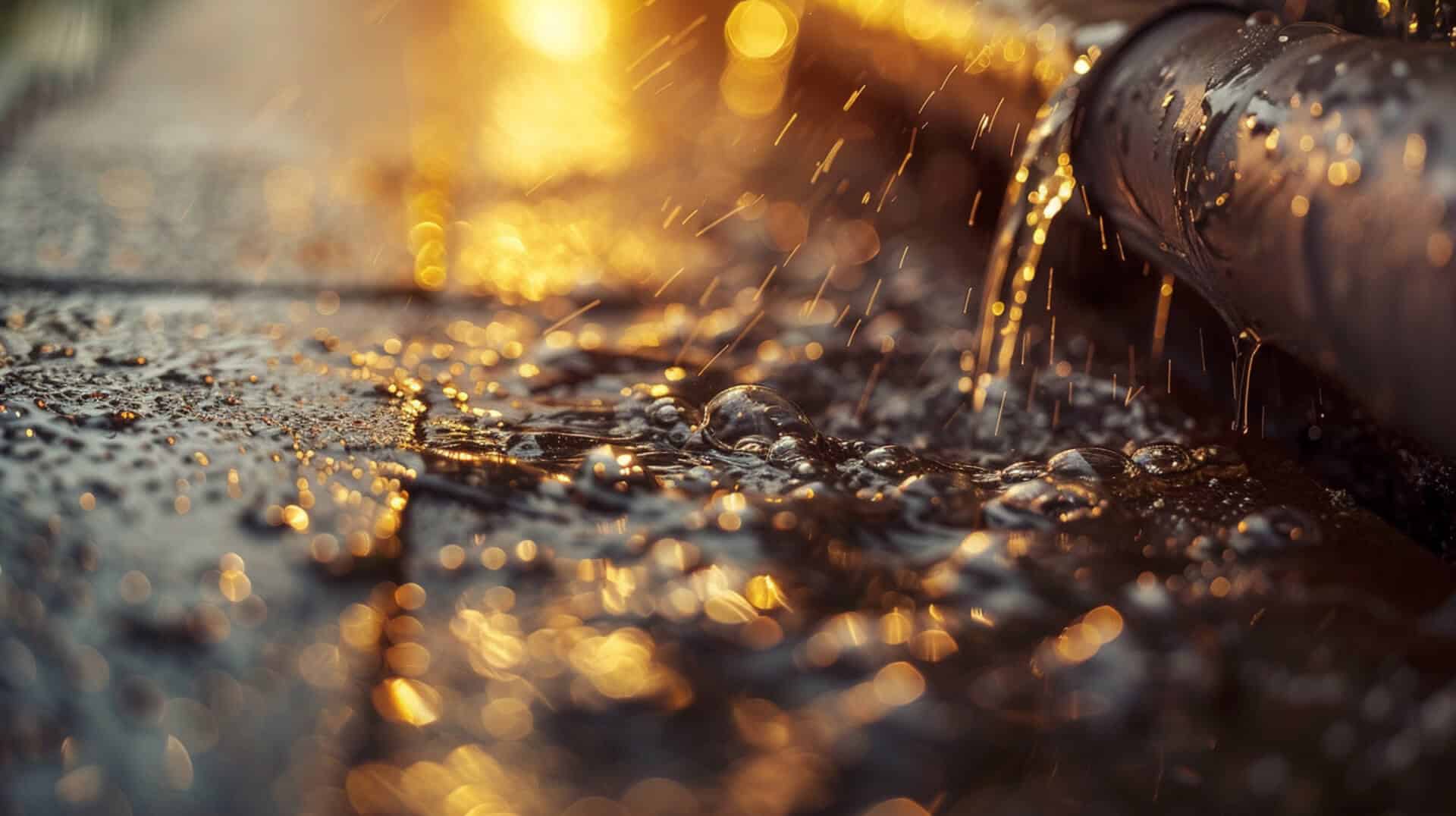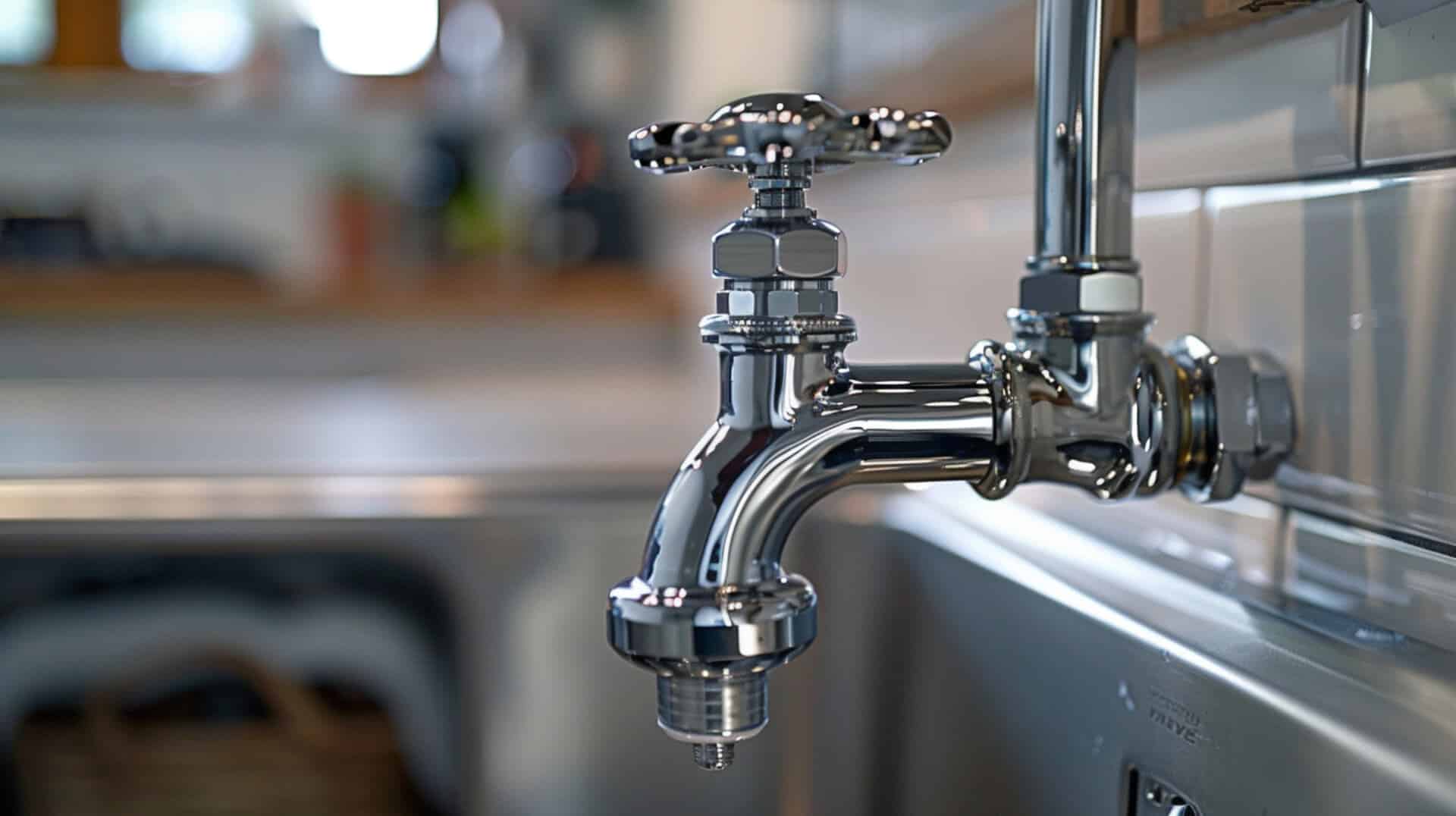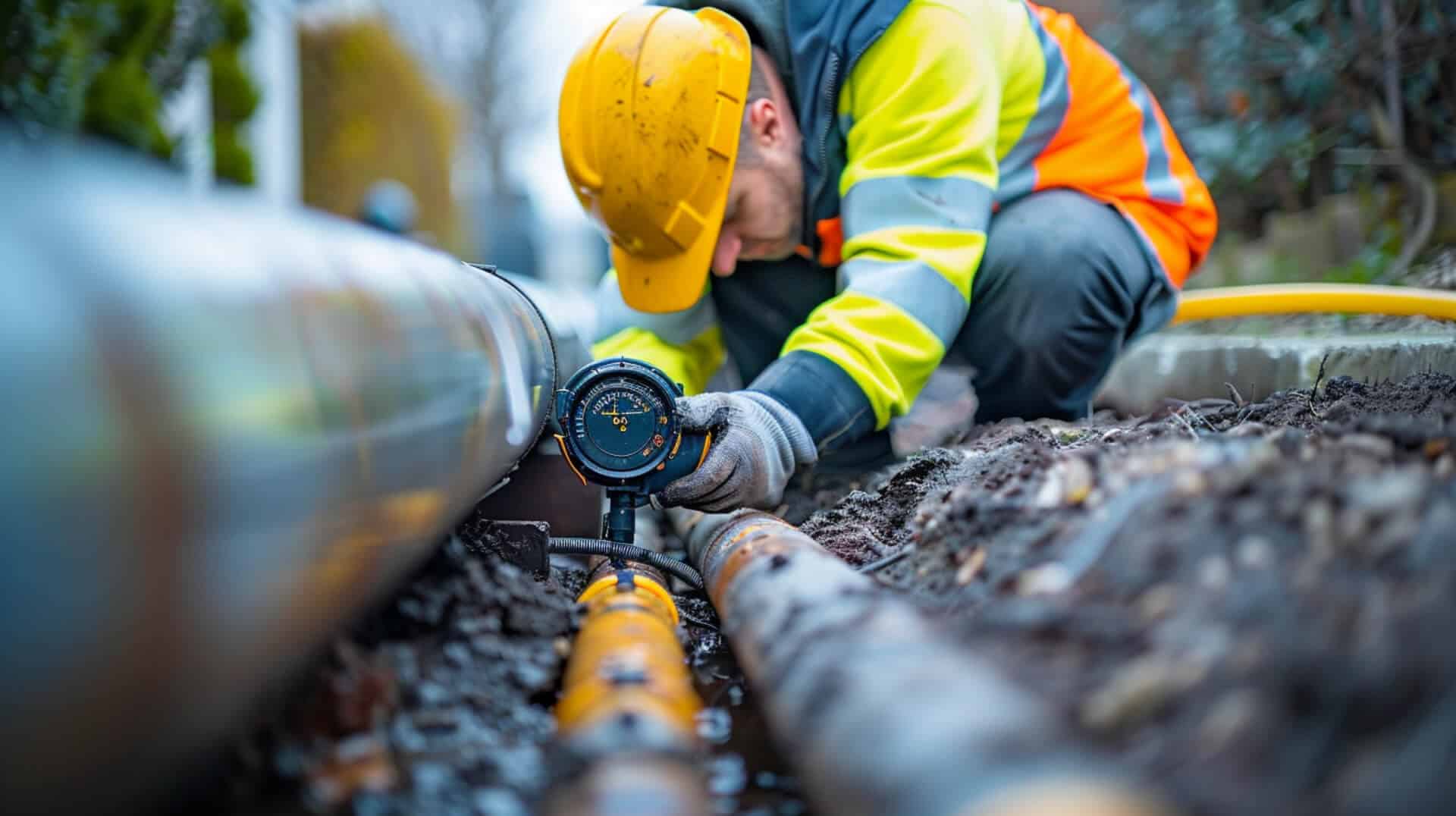 How Does Lateral Line Cleaning Work
How Does Lateral Line Cleaning Work

Understanding the critical role of lateral lines in wastewater management is essential for property owners. Lateral lines, also known as leach lines or field lines, are an integral component of both septic and sewer systems, responsible for dispersing effluenttreated wastewaterinto the soil.
What Are Lateral Lines?
Lateral lines are underground pipelines that carry effluent from the septic tank to the drain field, where it percolates through the soil for further natural treatment. Their proper function is vital to the overall efficiency of the wastewater management system.
The Importance of Regular Cleaning
Regular cleaning of lateral lines is crucial to prevent clogs and blockages, which can lead to system failure, environmental contamination, and costly repairs. Property owners must recognise the importance of maintenance to ensure the longevity and reliability of their wastewater systems.
Functionality Within Septic and Sewer Systems
In septic systems, lateral lines are the last step in the treatment process before the effluent is returned to the environment. In sewer systems, they connect individual properties to the main sewer line, requiring similar maintenance to prevent system-wide issues.
Common Issues and Their Origins
Common issues in lateral lines typically arise from the accumulation of solids, grease, and non-biodegradable materials, as well as tree root intrusion. These problems often occur in older systems or those that have not been regularly maintained, highlighting the need for property owners to be proactive in scheduling regular cleanings.
By understanding the function and importance of lateral lines, property owners can take the necessary steps to maintain their wastewater management systems effectively, ensuring environmental safety and avoiding unnecessary expenses.
Understanding the Importance of Lateral Line Maintenance
Regular maintenance of lateral lines is not merely a routine task; it is a critical measure to ensure the longevity and proper functioning of your property’s wastewater management system. Neglecting this duty can lead to a cascade of problems, both for the property owner and the environment.
Consequences of Inadequate Maintenance
Without regular cleaning, lateral lines can become clogged with debris, leading to sewage backups and potential property damage. These events often result in costly repairs and can significantly disrupt daily activities.
Environmental Health Impacts
Lateral line cleaning plays a pivotal role in environmental conservation. Properly maintained lines prevent the overflow of untreated wastewater, which can contaminate local waterways and soil, posing a risk to wildlife and human health.
The Case for Preventive Maintenance
Proactive maintenance is favoured over reactive measures due to its cost-effectiveness and ability to minimise the likelihood of emergency repairs. By addressing issues early, you can avoid the inconvenience and expense of unexpected system failures.
Optimal Maintenance Scheduling
To circumvent emergency situations, it is advisable to schedule regular lateral line cleanings. The frequency of these cleanings will depend on various factors, including usage patterns and the system’s age. Consulting with a professional can help determine an appropriate maintenance schedule tailored to your specific needs.
Identifying the Need for Lateral Line Cleaning
Recognising the early signs of lateral line issues is crucial for maintaining the efficiency of your wastewater management system. Prompt identification and resolution of these issues can prevent more significant problems and ensure the system’s longevity.
Symptoms of Lateral Line Blockage
If you notice slow drainage, gurgling sounds from plumbing fixtures, or water pooling in the area of the drain field, these may be indicators of a blockage in the lateral lines. Unpleasant odours emanating from drains or the drain field area are also common signs that cleaning is necessary.
Early Detection of Lateral Line Problems
Regular monitoring of the system’s performance is key to early detection. Be vigilant for changes in drainage speed or unexpected wetness in the drain field, as these can be early warnings of developing issues.
When to Seek Professional Intervention
Certain symptoms, such as sewage backup into the home or significant standing water over the drain field, necessitate immediate professional attention. These signs often indicate severe blockages or system malfunctions that require expert assessment and intervention.
Common Locations for Blockages
Blockages in lateral lines are most frequently found at points where tree roots intrude, where pipes connect, or in bends and turns of the piping. These areas are prone to accumulation of debris and can be focal points for clogs.
Effective Techniques for Lateral Line Cleaning
Maintaining the functionality of lateral lines is essential for the efficient operation of septic and sewer systems. Various methods are employed to clean these critical components, each with its specific applications and benefits.
Hydro Jetting: A High-Pressure Solution
Hydro jetting is a prevalent technique that utilises high-pressure water to dislodge and remove blockages within lateral lines. This method is highly effective against accumulations of grease, sludge, and even tree roots that can clog the lines.
Situational Preference for Cleaning Methods
The choice of cleaning method often depends on the nature of the blockage and the condition of the lateral lines. For instance, hydro jetting is preferred for its thoroughness and ability to clean without damaging the pipes, whereas other methods might be selected for more delicate situations or specific types of blockages.
Mechanical Root Cutting: Addressing Intrusive Roots
When tree roots infiltrate lateral lines, mechanical root cutting becomes necessary. This process involves the use of specialised cutting tools to remove roots that have grown into the pipes, restoring normal flow and preventing further damage to the system.
The Role of CCTV Inspections in Lateral Line Maintenance
CCTV inspections serve as a non-invasive diagnostic tool that significantly enhances the maintenance of lateral lines. By providing a visual assessment of the internal conditions of sewer pipes, these inspections can identify issues that are not immediately apparent.
Uncovering Hidden Issues
CCTV inspections can reveal a range of problems, from subtle cracks and leaks to obstructions and root intrusions. These issues, if left undetected, can escalate into more severe complications, necessitating costly repairs.
Advantages of Regular CCTV Inspections
Property management benefits from regular CCTV inspections as they help in planning maintenance schedules, preventing unexpected failures, and extending the lifespan of the wastewater infrastructure. By detecting issues early, property owners can address them before they lead to system-wide problems.
Optimal Timing for CCTV Inspections
Property owners should consider scheduling a CCTV inspection if they experience recurrent blockages, before purchasing a new property, or as part of a regular preventive maintenance programme. Inspections are particularly crucial for older systems where documentation of the existing infrastructure may be outdated or missing.
Preventive Measures to Keep Lateral Lines Clear
Maintaining clear lateral lines is essential for the smooth operation of your property’s wastewater system. By adopting daily practices and educating those who use the system, you can significantly reduce the risk of blockages.
Daily Practices for Blockage Prevention
To prevent lateral line blockages, avoid disposing of fats, oils, and grease (FOG) down the drain. These substances can solidify and accumulate in the pipes, leading to clogs. Instead, collect FOG in a container and dispose of it with solid waste.
Educating Tenants and Employees
Property owners should provide clear guidelines to tenants and employees on what should not be flushed or poured down drains. Regular reminders and visible signage can reinforce these best practices and help maintain the health of the lateral lines.
Critical Disposal of FOG
The disposal of FOG is particularly critical as it can lead to the formation of a biomata layer of organic material that prevents soil absorption in the drain field. Proper disposal is necessary to prevent this and ensure the longevity of the system.
Resources for Lateral Line Maintenance
Resources for maintaining lateral lines are widely available. Property owners can consult with local wastewater management services, access online educational materials, or contact professional plumbers who specialise in septic systems for guidance on best practices and preventive maintenance.
Trenchless Rehabilitation Techniques for Lateral Lines
Trenchless rehabilitation methods are modern alternatives to traditional pipe repair techniques that require minimal excavation. These methods are less disruptive and can be more cost-effective in the long term.
Cured-in-Place Pipe (CIPP) and Pipe Bursting
CIPP involves inserting a resin-saturated liner into the existing pipe, which is then cured to form a new pipe within the old one. Pipe bursting, on the other hand, breaks the old pipe while simultaneously pulling a new pipe into place. Both methods have their advantages:
- CIPP is highly efficient for repairing leaks and restoring pipe integrity without extensive digging.
- Pipe Bursting is effective for replacing pipes that are severely damaged or have collapsed.
Environmental Benefits of Trenchless Methods
Trenchless rehabilitation is considered environmentally friendly due to its minimal impact on the surrounding landscape. It preserves the existing ecosystem by avoiding large-scale excavation and the associated disruption to habitats.
Optimal Situations for Trenchless Techniques
Trenchless rehabilitation is best suited for situations where:
- The damage to pipes is extensive and requires a robust solution.
- Minimising disruption to the property and the environment is a priority.
- The goal is to achieve a long-lasting repair with reduced maintenance needs.
By choosing trenchless methods, property owners can ensure a swift return to normal operations with a focus on sustainability and cost-effectiveness.
Assessing the Environmental Impact of Lateral Line Neglect
The maintenance of lateral lines is not only a concern for property functionality but also for environmental health. Neglected lateral lines can have far-reaching consequences on local ecosystems.
Consequences for Local Ecosystems
Poorly maintained lateral lines can lead to the leakage of untreated wastewater into the environment. This effluent can contaminate soil and water sources, harming plant and animal life, and potentially posing health risks to humans.
Effects of Effluent on Soil and Water Quality
Blocked lateral lines can cause effluent to surface, leading to nutrient overload in the surrounding soil. This can result in algal blooms in nearby water bodies, depleting oxygen levels and affecting aquatic ecosystems.
Integrating Environmental Considerations into Maintenance
Incorporating eco-friendly practices into maintenance plans is essential. This includes regular cleaning to prevent overflows and using environmentally safe products and methods for unclogging and repair.
Resources for Eco-Friendly Practices
Property owners can learn more about environmentally responsible maintenance practices through local environmental agencies, wastewater management professionals, and online resources dedicated to sustainable living. These sources provide valuable information on how to maintain lateral lines in a way that protects the environment.
Financial Planning for Lateral Line Maintenance
Understanding the costs associated with lateral line cleaning and maintenance is essential for property owners to effectively budget and plan for the upkeep of their wastewater systems.
Typical Costs of Lateral Line Cleaning
The cost of lateral line cleaning can vary based on several factors, including the length and accessibility of the lines, the severity of the blockage, and regional pricing differences. On average, property owners might expect to pay anywhere from a few hundred to several thousand dollars for professional cleaning services.
Budgeting for Regular Maintenance and Repairs
To budget effectively, property owners should consider setting aside funds annually for regular maintenance. This proactive financial planning can help mitigate the impact of unexpected repairs and ensure that funds are available when needed.
Long-Term Savings from Preventive Measures
Investing in preventive maintenance, such as regular inspections and cleanings, can lead to significant cost savings over time. By preventing major blockages and system failures, property owners can avoid the more substantial expenses associated with emergency repairs and system replacements.
Seeking Multiple Quotes for Services
When the need for lateral line cleaning arises, it is advisable for property owners to seek quotes from multiple service providers. This allows for comparison of services and costs, ensuring that you receive quality work at a competitive price. Remember to verify the credentials and experience of any service provider to ensure that the work will be performed effectively and efficiently.
Selecting a Qualified Lateral Line Cleaning Service
When the time comes for lateral line cleaning, choosing the right service provider is paramount. Property owners must ensure that the company they select possesses the necessary qualifications and experience to perform the job effectively and safely.
Essential Qualifications for Service Providers
Look for service providers with a proven track record in lateral line maintenance. They should have the appropriate licences and certifications required by local regulations. It’s also beneficial if the company is bonded and insured to protect your property against any potential damage during the cleaning process.
Verifying Reputation and Reliability
To assess the reputation and reliability of a cleaning service, you can start by checking online reviews and testimonials from previous clients. Additionally, inquire about references and follow up with them to get firsthand accounts of the company’s performance.
Importance of Relevant Experience
Selecting a service provider with experience in handling properties similar to yours is crucial. Different property types, such as residential, commercial, or industrial, may have unique lateral line systems that require specialised knowledge and equipment.
Finding Reviews and Testimonials
Property owners can find reviews and testimonials on the service provider’s website, social media pages, or third-party review platforms. It’s also advisable to consult with industry peers or local business associations for recommendations.
Emerging Technologies in Lateral Line Cleaning
The field of lateral line cleaning is witnessing the introduction of innovative technologies that enhance the efficiency and effectiveness of maintenance procedures.
Advancements in Cleaning Techniques
New technologies in lateral line cleaning include:
- Lateral Launch Cameras: These devices allow for more precise inspections, providing detailed views of lateral lines from the main sewer line.
- Vacuum Excavation: This method uses high-pressure air or water to break up soil, which is then removed by a powerful vacuum, offering a non-destructive way to expose and repair lateral lines.
- Ultrasonic Root Cutting: Ultrasonic cutters provide a non-invasive method to remove tree roots, reducing the risk of pipe damage.
Benefits of Technological Innovations
These technologies improve the cleaning process by:
- Reducing the time required to diagnose and address issues.
- Minimising the disruption to property and the surrounding environment.
- Enhancing the precision of cleaning and repairs, leading to longer-lasting results.
Staying Informed on Technological Developments
For property owners, staying updated on these innovations is crucial as it can lead to more informed decisions regarding the maintenance of their wastewater systems. Understanding the available technologies can also help in selecting service providers who can deliver the most effective solutions.
Optimal Use of New Technologies
It may be beneficial to request the use of these technologies when:
- Facing complex blockages that traditional methods cannot address.
- The lateral lines are located in areas where traditional excavation is challenging or prohibited.
- A non-invasive approach is preferred to preserve landscaping or infrastructure.
Key Takeaways for Effective Lateral Line Maintenance
Maintaining healthy lateral lines is a critical aspect of property management that ensures the efficient operation of wastewater systems and protects the environment. Here are the essential practices property owners should consider:
Benefits of Proactive Lateral Line Maintenance
- Prevents System Failures: Regular cleaning and inspections can help avoid costly and disruptive sewage backups.
- Extends System Lifespan: Proactive maintenance can prolong the life of your septic or sewer system, saving money in the long term.
- Protects the Environment: Properly functioning lateral lines prevent the contamination of soil and water sources.
Seeking Professional Advice and Assistance
For further guidance on lateral line maintenance:
- Consult with Experts: Reach out to licenced professionals who specialise in septic systems for personalised advice.
- Utilise Online Resources: Access a wealth of information available on government and environmental websites.
- Attend Workshops: Local workshops and seminars can provide hands-on learning opportunities.
By implementing the discussed practices, property owners can ensure the longevity and reliability of their wastewater management systems. Regular maintenance, coupled with a proactive approach, is the key to avoiding emergencies and ensuring that the system functions as intended.
